A Salvaged Banksy Mural is Now on View in NYC
This unique Banksy mural goes up for auction on May 21st in NYC!


On a recent tour by the Center for Architecture Foundation (CAF), led by Catherine Teegarden, Director of Education, a group of history buffs learned to decode the signs at our feet and above our heads that tell the story of New York City in the 1800’s. The CAF tour, part of its “Reading the Streetscape,” series focused specifically on the intricate, yet simple, cast-iron architecture that SoHo is known for.
If you’re walking along Houston Street and you happen to glance at the rows of buildings going east and west, you might notice more walls than windows and doors. These are the walls that have become iconic advertising spaces for Calvin Klein, Hollister and other brands. This urban facet exists because Houston Street was once a narrow road like the others around SoHo until it was widened to make room for more people and cars. The buildings weren’t ever intended to be showing off their sides.
You might also notice that the street signs in SoHo are brown, not green like standard street signs. This is because a large section of SoHo is a historic district, designated by the Landmark Preservation Commission in 1973, and extended in 2010.
The first thing you should know about cast iron is that it is exceptionally strong. Although it was first used in the 5th century BC, it wasn’t used in buildings until the Industrial Revolution. In addition to being a stronger product than other irons (such as wrought iron), the use of cast iron in construction allowed buildings to span greater distances. The material could be prefabricated offsite and quickly put up on site. It also allowed the delicate designs of the time to be mass-produced.
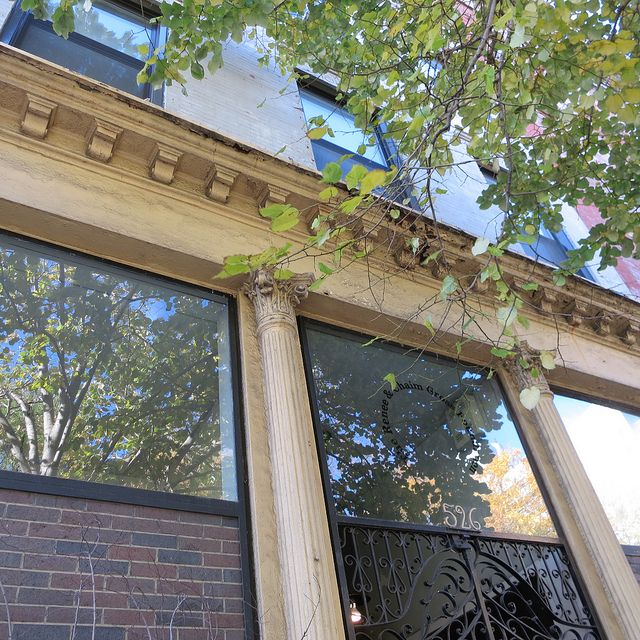
Slender columns, which were hollow, were one of the common threads in the cast-iron architecture of SoHo. Photo by Larissa Zimberoff for Untapped Cities
As the group walked along the grey stone streets, our guide pointed out the cast iron column which are hollow, enabling architects to build higher without the thick walls previously required to construct brick buildings. Also, most of the buildings were for manufacturing or department stores, built before electricity was invented. The new cast iron infrastructure, including glass bricks and giant-scale windows, allowed daylight to enter the basement and the far reaches of the storefronts. The front curtain of cast iron, which supported the structural weight of the building, opened up much-needed floor space for factories.
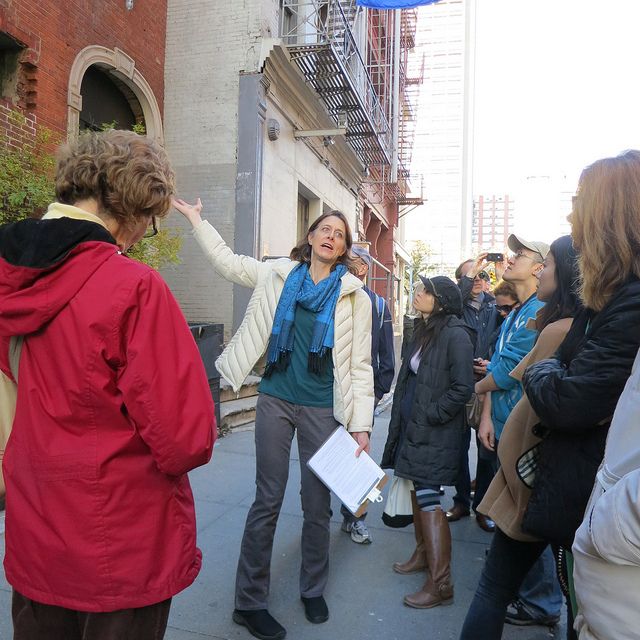
Our tour guide Catherine Teegarden, Director of Education for the Center for Architecture Foundation (CAF), points out the architectural elements in SoHo. Photo by Larissa Zimberoff for UntappedCities
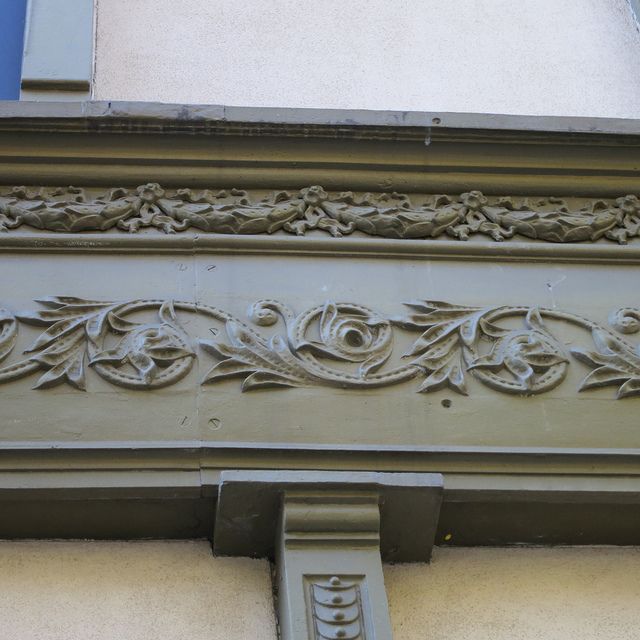
This example of intricate scrollwork looks handmade but is in fact machine made, a factor that made cast-iron buildings cheaper to produce. Also notice the bolts that affix the section to the building, another quirk about cast-iron architecture. Photo by Larissa Zimberoff for UntappedCities
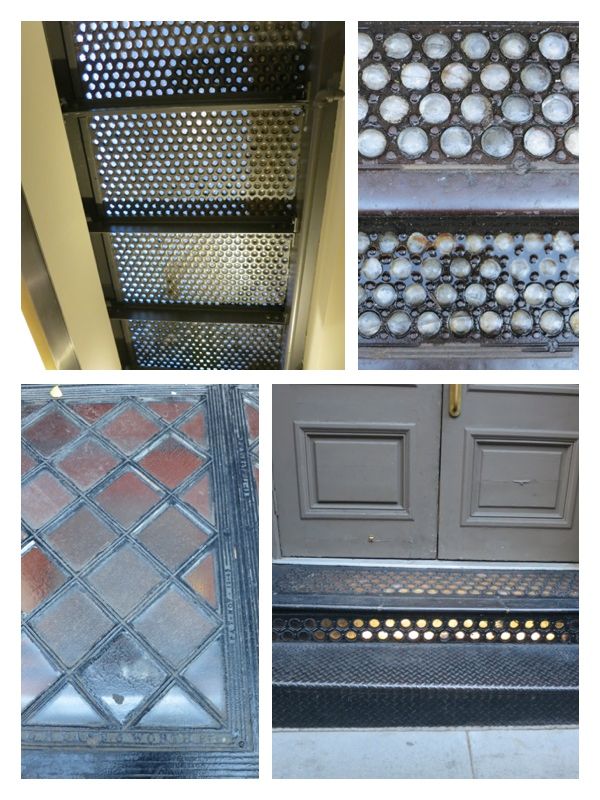
Shown here are examples of different forms of glass bricks, which brought in light to the basement before electricity was invented. Photos by Larissa Zimberoff for UntappedCities
Two of the men responsible for this density of cast-iron buildings were James Bogardus, an architect who championed the use of cast-iron, and Daniel Badger, a founder who produced cast-iron components for Bogardus. The catalog Badger produced to showcase his offerings is still referred to today for its precise snapshot of that moment in time.
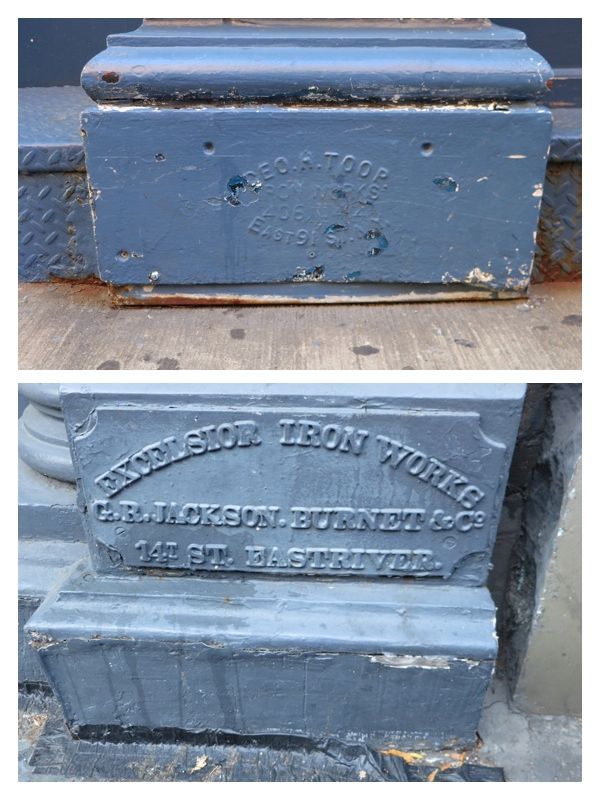
Foundry stamps were often placed at the base of cast-iron buildings. Photos by Larissa Zimberoff for Untapped Cities
Jockeying with the Saturday tourists, the group mounted the loading docks close to the buildings. Teegarden went on to explain that they were designed at that height to “lift people up and out of the fray, as well as to come closer to the structures so they could window shop.”
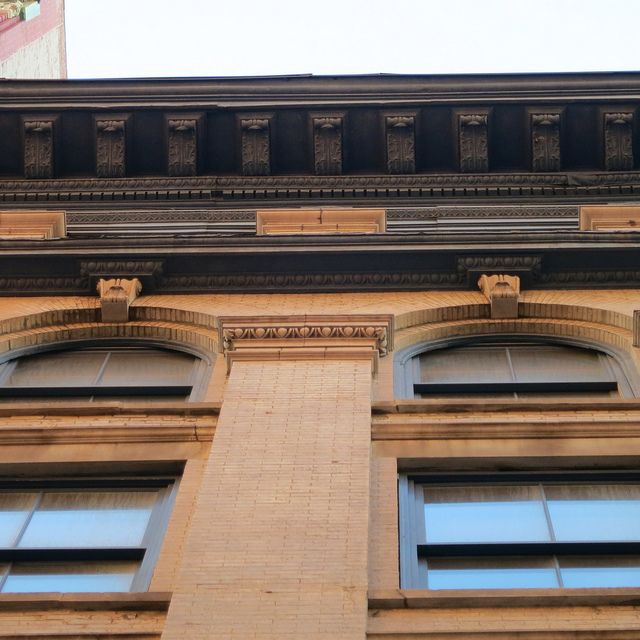
Egg & Dart, a common architectural term borrowed from the Greeks, means life & death. The phrase refers to the egg-shaped sections edged with curves, somewhat like a parenthesis. Photo by Larissa Zimberoff for Untapped Cities
Want a handy tip for how to spot a cast iron building? Bring a magnet with you on your next stroll through SoHo and see if it sticks. You can also look for nuts and bolts that would have been used to affix sections together, or metal loops that once held onto metal shutters that protected the buildings from neighboring fires.
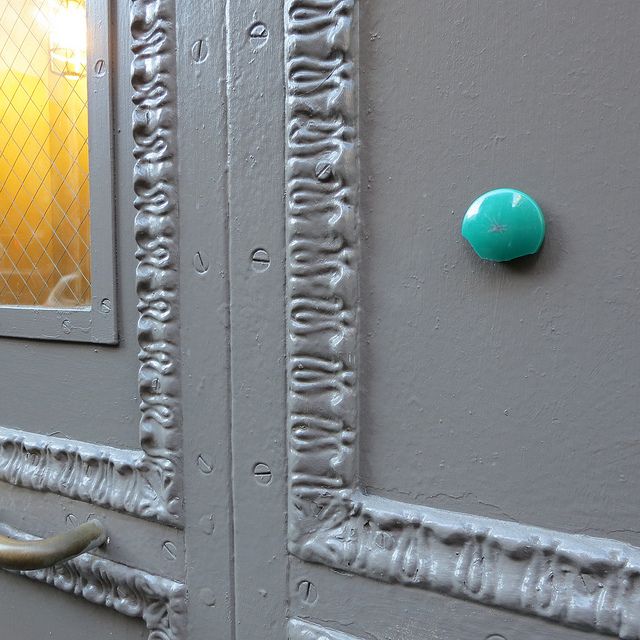
A magnet will stick to cast-iron, but not other building materials. Bring one with you as you wander the SoHo streets. Photo by Larissa Zimberoff for Untapped Cities
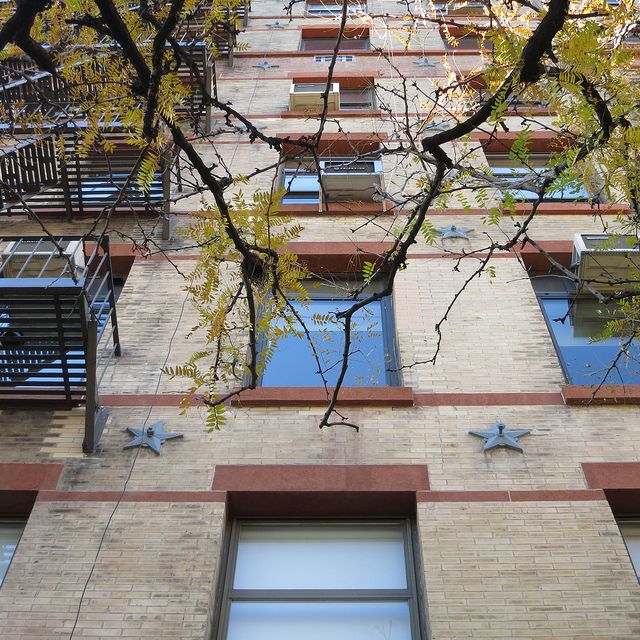
Star-shaped cast-iron pieces show where the building was stabilized with cast iron that spanned the length of the building, and was bolted to the facade. Photo by Larissa Zimberoff for Untapped Cities
And, if you were also wondering why Houston Street has that funny pronunciation, it’s because it was named after William Houstoun, a congressional delegate for the State of Georgia, who was married to the daughter of the man who christened the street.
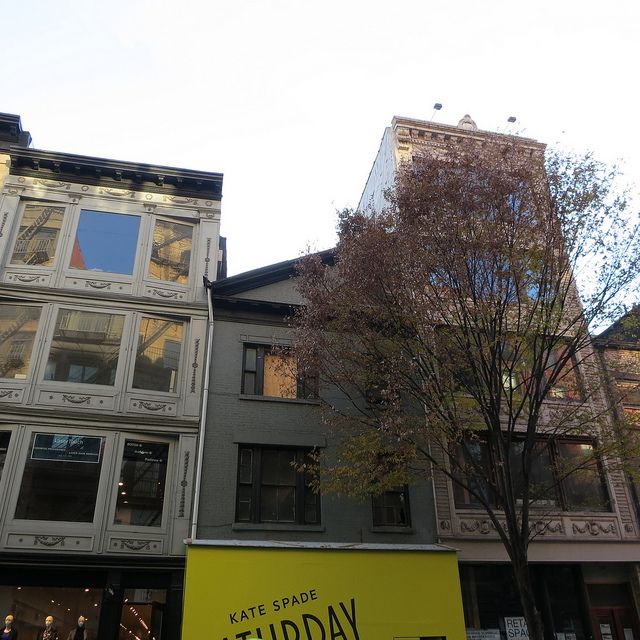
If you look up you may notice this building is missing the other half of its peaked roof. Photo by Larissa Zimberoff for Untapped Cities
After wandering the historical district for two hours we were reminded why we all wanted to live there: giant windows, tall ceilings, expansive living spaces. Now if we could only afford the rent.
The Center for Architecture Foundation has several new Reading the Streetscape neighborhood tours planned for next spring, such as New Amsterdam, Battery Park and Greenwich Village. You can learn more about these public programs on their website.
Subscribe to our newsletter